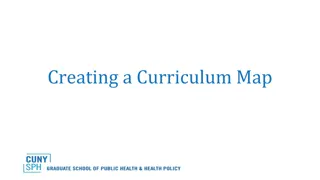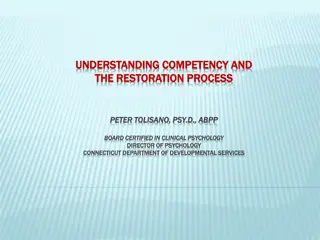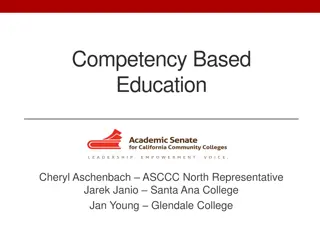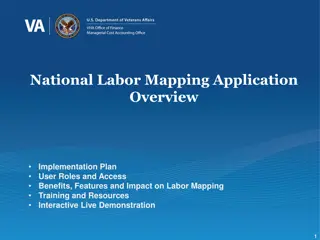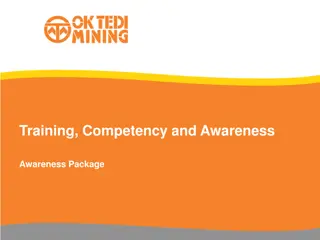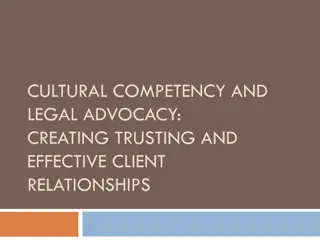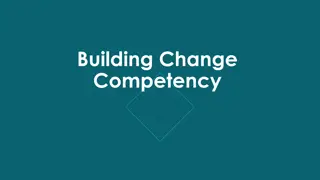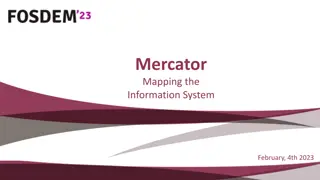Overview of Performance Management Systems and Competency Mapping
Performance Management Systems (PMS) play a crucial role in ensuring organizational objectives are met through individual contributions. This entails continuous improvement at all levels - individual, team, and organizational. Managing performance is vital for survival and growth in a competitive environment, aiming to establish high-performance organizations and utilize talents effectively. The transition from Performance Appraisal Systems (PAS) to PMS reflects a shift towards focusing more on performance management. Objectives of PMS include enhancing performance, clarifying roles, identifying development needs, building competence, and providing a basis for rewards and motivation. The performance equation emphasizes the correlation between individual performance, abilities, motivation, and organizational support. Planning and managing performance involve identifying key performance areas, setting specific, measurable, challenging, and realistic goals, and assigning weightages and time estimates.
- Performance Management
- Competency Mapping
- Organizational Objectives
- High Performance
- Talent Utilization
Download Presentation

Please find below an Image/Link to download the presentation.
The content on the website is provided AS IS for your information and personal use only. It may not be sold, licensed, or shared on other websites without obtaining consent from the author. Download presentation by click this link. If you encounter any issues during the download, it is possible that the publisher has removed the file from their server.
E N D
Presentation Transcript
Awareness on Performance Management System and Competency Mapping Jagath Karunathilaka Consultant Finance and HR Management of CSOs
Need for PMS PMS is the system that ensures organizational objectives are achieved through individual contribution while they are being developed
What is Performance Management? Continuous improvements in performance at individual, team and organizational levels in all aspects of performance
Why Do we have to Manage Performance? Survival in a competitive world Growth and profits Establishing an high performance organization To put to use the best talents of people in the organization
Renewed Emphasis on Performance Management Performance Appraisals System (PAS) replaced by Performance Management Systems (PMS) This is due to change in focus from Appraisal to Performance In Appraisals the focus is on Appraisal and not so much on Performance Now the focus is on Performance and its Management The system themselves are not too different
Objectives of PMS Performance improvements Role clarity Identification of development needs Competence building Data base for rewards, promotions, recognition and motivation
Performance Equation Individual Performance = Ability X Motivation X Organizational Support
How Do You Plan Performance ? Identify Key Performance Areas KPA/KRA Set goals : objectives Specific (observable) Measurable (quantitative qualitative) Ambitious (challenging) Realistic Time Bound Assign weightages & time estimates
How Do You Manage Performance ? we.hS l%ufha uQ,sl mshjrhka mshjr 1 : m%Odk m%;sM, f a;% (KRA)/ m%Odk ld h idOk ks Kdhl (KPI) l,ska ksYaph lr l<uKdld ;ajh iska ,nd oSu . mshjr 2 : jd Isl jHdmd l yd fufyhq b,lal (Targets) l<uKdld ;ajh iska idl Pd lr ,nd oSu. ta wkqj ld ;=uh iuq ; b,lal msysgqjd .ekSu. mshjr 3 : jd Isl / ff;%hsudisl b,lal imqrd .ekSu i|yd fhduqjk m%Odk l%shdldrl (Key Action) ;uka iska ie,iq lr .ekSu mshjr 4 : iqm l ks,Od ka iska ld h idOk udi 3 lg jrla iudf,dapkh ls u (Performance Review) yd wjYH iyh ,nd oSu. mshjr 5 : udi 6 lg jrla ld h idOkh we.hSu (Performance Evaluation) yd jir wjidk we.hSfuka miq ld h idOkh u; O m%;sodk ,nd oSu (Rewards and Recognition). PM Cycle: Plan Monitor Analyse/Review Evaluate Improve Develop Reward
Who Plans Performance ? Performer With the help of his supervisor or seniors In the context of organizational and unit plans On the basis of previous performance Using bench marks where possible
How Frequently ? Depends on the needs and feasibility Every day for self Once a quarter with boss for review Once a month or more with the department Once every half yearly for appraisal
Components of PMS KPAs, KRAs, KPI, Objectives, etc. Attributes Participative planning Participative review Performance analysis
Components of PMS What is KRA? Key Result Area or KRA refers to general area of outputs or outcomes for which department s role is responsible KRA in simple terms may be defined as primary responsibilities of an individual, the core area which each person is accountable KRA enables you to take ownership of your job and to accept responsibility for those area in which achieving results are you re responsibly.
Components of PMS Importance of KRA Set goals and objectives Prioritize their activities, and therefore improve their time/work management Clarify roles of department or individuals Focus on results rather than activities Align their roles to the organization s business or strategic plan Promote an environment of self-management
Components of PMS What is a KPI? KPI stands for key performance indicator, a quantifiable measure of performance over time for a specific objective. KPIs provide targets for teams to shoot for, milestones to gauge progress, and insights that help people across the organization make better decisions. From finance and HR to production, marketing and sales, key performance indicators help every area of the business move forward at the strategic level.
Components of PMS Why Are KPIs Important? KPIs are an important way to ensure your teams are supporting the overall goals of the organization. Here are some of the biggest reasons why you need key performance indicators. Keep your teams aligned: Whether measuring project success or employee performance, KPIs keep teams moving in the same direction. Provide a health check: Key performance indicators give you a realistic look at the health of your organization, from risk factors to financial indicators. Make adjustments: KPIs help you clearly see your successes and failures so you can do more of what s working, and less of what s not. Hold your teams accountable: Make sure everyone provides value with key performance indicators that help employees track their progress and help managers move things along.
Components of PMS Performance review discussion Identification of development needs Development actions Ratings Review by review teams for rewards etc Documentation
Types of PMS Systems Individual appraisals Team appraisals Upward appraisals 360 degree appraisals
Appraisal Style Confidential/Open One to one Face to Face Meeting One to Many (Committee) 360 Degree Feedback (Competency Analysis) Oneself Superior Peer Subordinates Select the appraisal method depends on the culture and the structure of BGL
Focus of the Appraisal Construct appraisal form in determining appraisal method having concentrated with accuracy and fairness Focus of the appraisal (either job or the person or combination of both) focus on job appraisal form is more like to ask achieving targets/objectives - result oriented appraisal focus on person appraisal form looks jobholders personal attributes (qualities and attitudes)- personality oriented appraisal
Performance Criteria Selected Emphasis on individual qualities rather than results (personal attributes and technical attributes) - depend on how they see things (perception) Emphasis on the job and measurable targets agreed by the job holder - track objective evidence How setting performance standards o Quantity (how much) o Quality (how well) o Time (by what time) o Cost savings (at what cost)
Result Oriented Appraisal Form Key Results Areas Targets Set for the period * Achieved Evidence Notes Profitability Increase profit: sales ratio by 5% yes Annual Accounts Sales Achieve gross sales of Rs 50Mn no (Rs 45Mn) Annual Accounts Market Share Maintain present market share at 15% No (13%) Industry statistics Price cutting by all competitors Delivery Reduce average delivery time to four weeks yes Customer accounts Staff performance Ensure staff costs do not exceeded 55% of total expenditure yes Annual Budget Summery * Financial year
Appraisal Form for Individual Qualities Personal Attributes - Soft Skills/traits (Behavioral Competency) Leadership (always at the center of activity - ability to influence others) Initiative and Drive (always acts on own initiative) Judgment (assesses situation and critical factors) Decision making ability (make sound decisions at all times) Customer Awareness (aware need for quality, timeliness and price) Self discipline (has well-balanced attitude towards work and leisure) Teamwork (work collaboratively with a group of people to achieve a goal) Technical Attributes (Technical /Functional Competency) Technical Knowledge product/subject knowledge/functional expertise Quality of Work rarely make error or mistakes Diligence constantly hardworking Cost Consciousness effort or thought of giving to cost control
Performance Rating Generally Used Appraisal criteria are generally personality oriented or result oriented, within each measure individual performance o Personality oriented behavioural scale (box ticking describing performance) o Result oriented Target Vs. Achievement o Free written reports essay type o Questions set on the appraisal document
Improvement of the overall performance and culture of an organization Objectively driven system having key feature of; output criteria based on agreed upon targets/plans under pre-defined KPIs linked with overall business objectives/plans Management By Objectives (MBO) Input criteria based on competency assessment: competency is recognized as input criteria Competency based HRD practices
Competency as input for organizational effectiveness Create competency based HRD practices by providing continues ongoing training to change attitude of staff towards better customer service while focusing on competence development and capacity planning
Competency and Effectiveness = Raw material & Output Output (Effectiveness on the job) Raw material (Competency)
Competency and Effectiveness = Raw material & Output Output (Effectiveness on the job) Raw material (Competency)
Competency A Competency is an underlying characteristic of a person which enables him/her to deliver superior performance in a given job, role or a situation. Competencies are seen mainly as inputs.
What is a competency? Competency may take the following forms Knowledge Skill Attitude Other characteristics of an individual Motives values Self concept etc.
Competency Models Competency models represent the most critical knowledge, skills and behaviors that drive successful performance with respect to a particular type of job or occupation. They describe competencies in behavioral terms, using behavioral indicators, so employees can recognize the competencies when demonstrated.
Competency Models Used as a human resource tool for Selection Training and development Performance appraisal and Succession planning.
Framework - Core Competencies Typically, Company s core competency profile refers set of characteristics that must be possessed by every employee regardless of their organizational level or the position. Core competency profile of the Company is considered as its strategic strength to support the company s overall mission
Framework - Core Competencies Core competency profile Examples Core competencies or general professional competency profile is comprised with following characteristics Dependability / Accountability - Completion of assignments on time & carries out instructions Learning & Feedback - Attitude of continuous learning and provision of accurate feedback Interpersonal Relations - Cooperative, considerate & tactful nature in dealing with others Initiative & Leadership - Recommending & creating own work practices & procedures Communication Skills - Expression of thoughts clearly & concisely in written & oral form Facing Issues / Problem Solving - Manner of solving conflicting issues by constructive action
Framework - Core Competencies Core competency profile Examples Planning & Organization / Making an Impact - Ability to optimize time, meet deadlines, establish short & long term plans Management Effectiveness / Drive & Resilience- Skill, involvement & effectiveness Staff Development (For Managerial Staff) - Guidance & opportunities provided for the development of staff Professionalism & Business Focus -High standards of integrity, competence & clear understanding of effective operational aspects Delivering Quality Service - Monitors and upholds high quality of service and products to clients
Values cum Organizational Competency for Non Profit Field Community Responsibility - Respect for the communities we work with and serve sense of community responsibility Acting responsibly toward the communities in which we work and for the benefit of the communities that we serve; Human Empowerment: We trust and delegate to those we work with, so that we can tap into the full human potential of our staff that is yet to be tapped Productivity Conscious: We productively use our time at work and ensure that all the work we do is of value to the service recipient or to the non profit organizational sustainability. Responsibility for our Decisions and their Consequences. Being responsible, transparent and accountable for all of our actions; and Improving the accountability, transparency, ethical conduct and effectiveness of the nonprofit field. Integrity in our actions - Acting honestly, truthfully and with integrity in all our transactions and dealings;
Framework - Competency Mapping Company shall undertake the competency mapping exercise as a process of identifying the specific skills, knowledge, abilities, and behaviors required to operate job related tasks in the company. Competency maps are referred as competency profiles or skills profiles of this exercise.
Procedures - Role-Set Based Competency Mapping a) Identify Role Holder (key roles in the CSO as per the organizational structure) Defining role relationship (reporting authority, subordinate, peers etc.) Identify divisional KRA & KPI (where the role holder is located) Identify the objectives of the functions or division where the role is located Identify individual KPAs or KRAs and KPIs of the role holder List of the tasks & activities as per the JD List of the activities expected to be performed by the role holder List of the actual KASOs (*) required to perform the job task effectively b) c) d) e) f) g) h)
Procedures - Role-Set Based Competency Mapping Four areas of competencies could be identified that are Technical / functional competencies KASOs associated with the technology or functional expertise required to perform the role Managerial KASOs required to plan, organize, mobilize and utilize various resources. Human and behavioral KASOs required to motivate, utilize and develop human resources Conceptual abilities to visualize the invisible, think at abstract levels and use the thinking to plan future business.
Procedures - Role-Set Based Competency Mapping KSAOs are commonly referred to as competencies. Four areas of competencies could be identified that are Knowledge: Understanding acquired through learning. It is a body of information relevant to job performance. It is what people have to know to be able to perform a job, such as knowledge of policies and procedures for a recruitment process. Attitude: your view point towards the job Skills Capabilities acquired through practice. It can be financial skill budgeting, or a verbal skill; making a presentation
Procedures - Role-Set Based Competency Mapping KSAOs are commonly referred to as competencies. Four areas of competencies could be identified that are Other characteristics of an individual includes Motives: example - an affiliation oriented person constantly think about having friends, and achievement oriented person wants to accomplish unique things or wants to be better than before. Values: example - honesty, openness, transparency, work values etc. Traits: example- physical qualities like quick reaction time and good eyesight are required to drivers etc. Self-concept: example- self-worth, confidence and attitudes to one s self.
Overall HR Strategy or HR Mission It provides following quality services to the employees of the company Recruitment of qualified individuals. Retention of valuable employees. Training, development and education to promote individual success and increase overall value to the organization. A safe and healthful working environment. Inspiration and encouragement for a high level of employee morale through recognition, effective communication and constant feedback. Resources for administering benefits, policies and procedures. These services are achieved through a teamwork philosophy that is inspired through effective organizational skills, proactive efforts, and a balance between professionalism and the ability to have employee well being
Launch and steps followed rolling out Initial discussion and awareness Preparation Design stage Testing Awareness Training Management Approval Implementation Trial Review and improve further Adopting the PMS by circular






